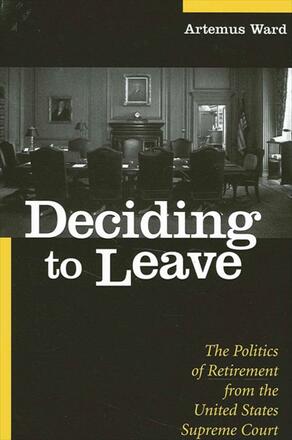
Deciding to Leave
The Politics of Retirement from the United States Supreme Court
Alternative formats available from:
The first sustained examination of the process by which justices elect to leave the United States Supreme Court.
Description
While much has been written on Supreme Court appointments, Deciding to Leave provides the first systematic look at the process by which justices decide to retire from the bench, and why this has become increasingly partisan in recent years. Since 1954, generous retirement provisions and decreasing workloads have allowed justices to depart strategically when a president of their own party occupies the White House. Otherwise, the justices remain in their seats, often past their ability to effectively participate in the work of the Court. While there are benefits and drawbacks to various reform proposals, Ward argues that mandatory retirement goes farthest in combating partisanship and protecting the institution of the Court.
Artemus Ward is Assistant Professor of Political Science at Northern Illinois University.